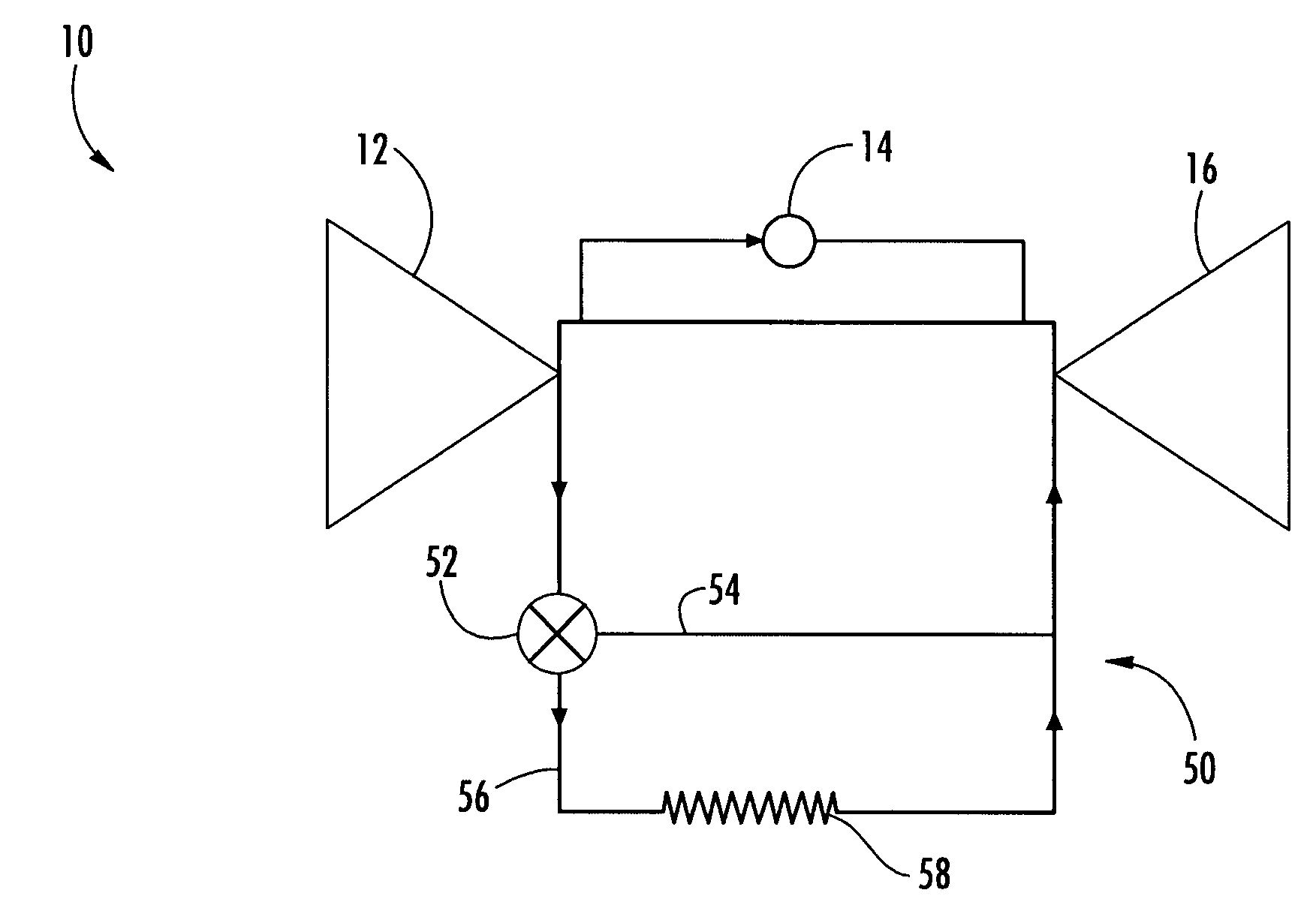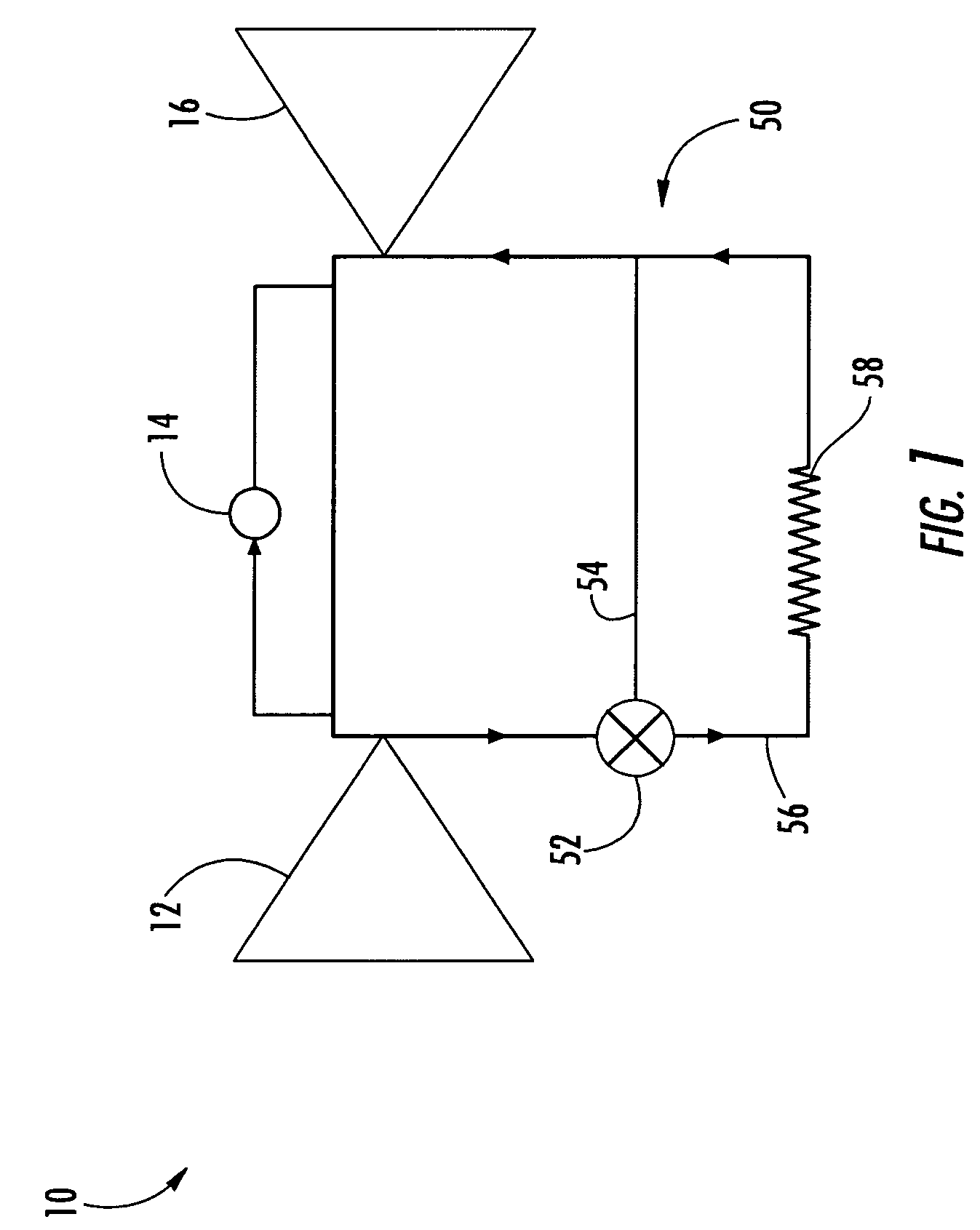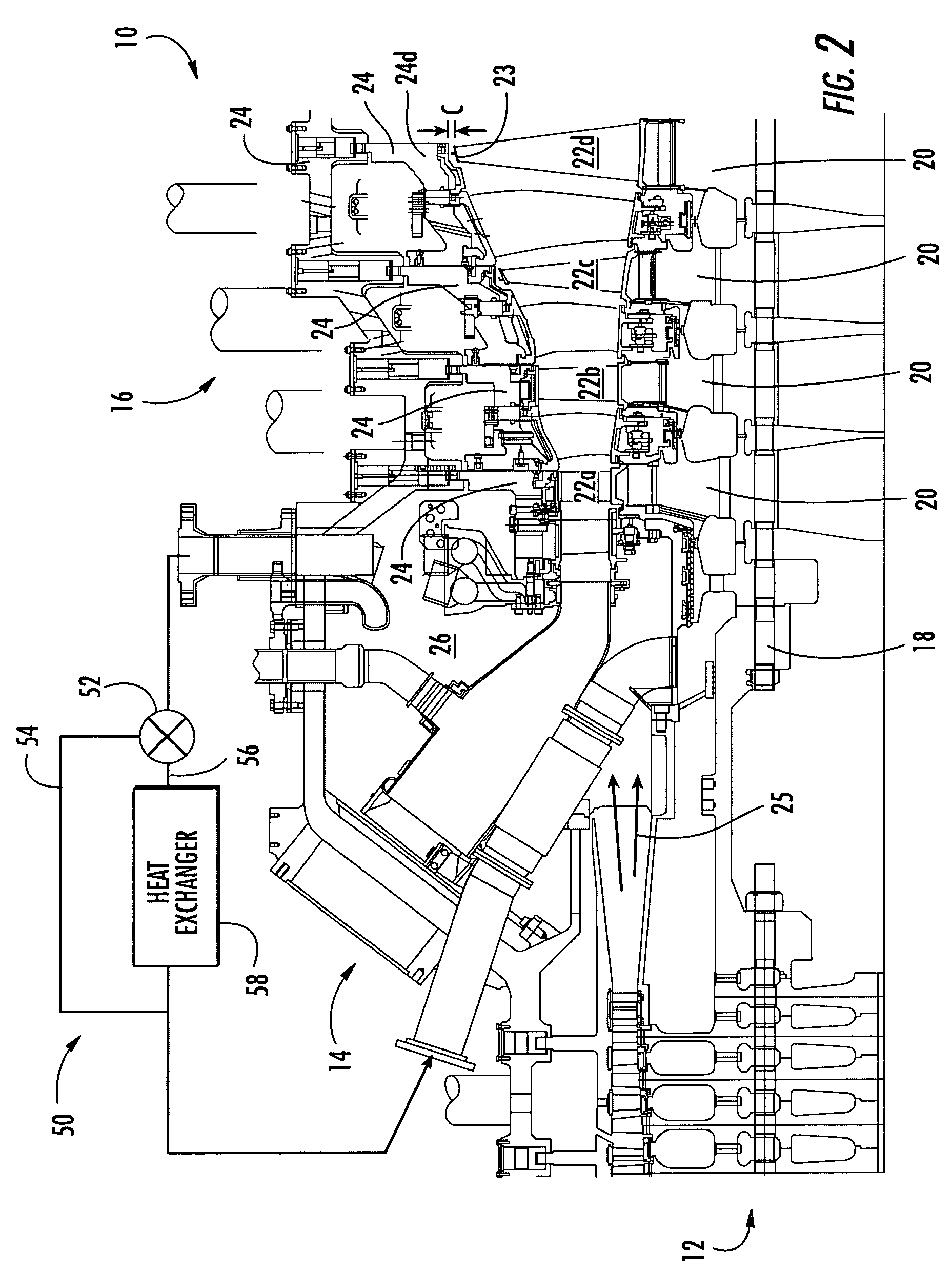Blade tip clearance control
- Summary
- Abstract
- Description
- Claims
- Application Information
AI Technical Summary
Benefits of technology
Problems solved by technology
Method used
Image
Examples
Embodiment Construction
[0016]Aspects of the present invention generally relate to improving the efficiency of turbine engines. More particularly, aspects of the invention relate to the active management of blade tip clearances at various instances during the operation of a turbine engine. Aspects of the invention are described in connection with turbine engine assemblies and methods of operating such turbine engines.
[0017]Embodiments according to aspects of the invention are shown in FIGS. 1–2, but the present invention is not limited to the illustrated structure or application. Further, the following detailed description is intended only as exemplary.
[0018]Aspects of the invention can be applied to a variety of turbine engine systems. In basic form, a turbine engine 10 can generally include a compressor section 12, a combustor section 14 and a turbine section 16 (FIG. 1). Each of these sections can have a variety of components and configurations. As shown in FIG. 2, the turbine section 16 can include a r...
PUM
 Login to View More
Login to View More Abstract
Description
Claims
Application Information
 Login to View More
Login to View More - R&D
- Intellectual Property
- Life Sciences
- Materials
- Tech Scout
- Unparalleled Data Quality
- Higher Quality Content
- 60% Fewer Hallucinations
Browse by: Latest US Patents, China's latest patents, Technical Efficacy Thesaurus, Application Domain, Technology Topic, Popular Technical Reports.
© 2025 PatSnap. All rights reserved.Legal|Privacy policy|Modern Slavery Act Transparency Statement|Sitemap|About US| Contact US: help@patsnap.com



